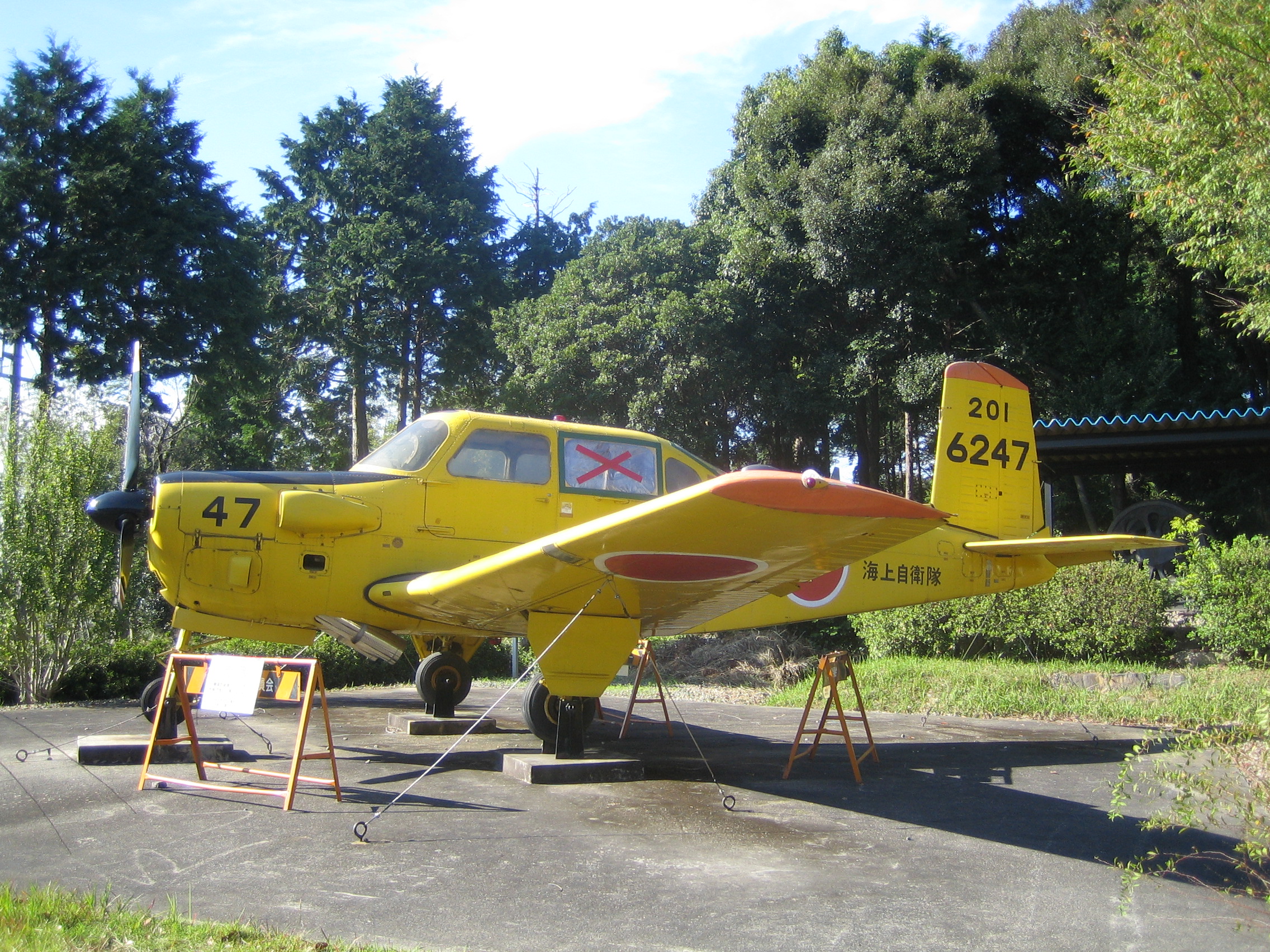- Fuji KM-2
infobox Aircraft
name = KM-2
type = Primary trainer
manufacturer = Fuji
caption =
designer =
first flight =16 January 1962
introduced = 1962
retired =
produced =
number built = 64
status =
unit cost =
primary user = Japan Air SDF
more users = Japan Maritime SDFJapan Ground SDF
developed from = Beech T-34
variants with their own articles =Fuji T-3 Fuji T-5 The Fuji KM-2 is aJapan ese propeller-driven light aircraft, which was developed byFuji Heavy Industries from the Beech T-34 which Fuji built under licence. Various versions have been used as primary trainers by theJapan Self-Defense Forces , with the KM-2B remaining in service with theJapan Air Self-Defense Force Design and development
Fuji Heavy Industries was established in July 1952 as a successor to Nakajima, and undertook licenced production of the Beech T-34
trainer aircraft as its first product. This was used by Fuji for the development of the Fuji LM-1 which was a four-seat liaison aircraft powered by a 225 hp Continental O-470 engine, with introduction of a more powerful 340 hp Lycoming O-480 engine resulting in redesignation as the LM-2, with both the LM-1 and LM-2 being used by theJapan Ground Self-Defense Force .The KM was a four seat civil version of the LM-1, fitted with the more powerful Lycoming engine that was later used by the LM-2. After the KM was used by the Japanese government for civil pilot training, the KM-2 was developed as a side by side two seat trainer, first flying on
16 January 1962 cite book|author=Donald, David (Editor)|title = The Encyclopedia of World Aircraft|year = 1997|publisher = Aerospace Publishing|location=London|isbn= 1-85605-375-X] . Sixty two were purchased by theJapan Maritime Self-Defense Force as primary trainers, with a further two purchased by the Japan Ground Self-Defense Force as the TL-1 cite book |last= Donald|first=David |coauthors= Lake, Jon (editors) |title= Encyclopedia of World Military Aircraft |year= 1996 |publisher= Aerospace Publishing|location= London |isbn= 1 874023 95 6] .The KM-2B was a further development of the KM-2 for use as a primary trainer for the Japan Air Self-Defense Force. It combined the structure and engine of the KM-2 with the tandem cockpit of the T-34 Mentor, first flying on
17 January 1978. Fifty were purchased by the JASDF as the Fuji T-3, production continuing until 1992 .Operators
;JPN
*Japan Air Self-Defense Force
*Japan Maritime Self-Defense Force
*Japan Ground Self-Defense Force Specifications (KM-2)
aircraft specifications/switch
plane or copter?=plane
jet or prop?=propref=Jane's Aircraft Recognition Guide [cite book|title=Jane's Aircraft Recognition Guide|last=Rendall|first=David|pages=505|year=1995|id=ISBN 0-00-4709802|publisher=HarperCollinsPublishers|location=Glasgow, UK]
crew=2: student, instructor
length main=8 m
length alt=26 ft 4 in
span main=10 m
span alt=32 ft 10 in
height main=3 m
height alt=9 ft 11 in
area main=
area alt=
empty weight main=1,120 kg
empty weight alt=2,469 lb
loaded weight main=
loaded weight alt=
useful load main=
useful load alt=
max takeoff weight main=1,510 kg
max takeoff weight alt=3,329 lbengine (prop)=
Lycoming IGSO-480 -A1A6
type of prop= piston engine
number of props=1
power main=254 kW
power alt=340 hpmax speed main=377 km/h
max speed alt=234 mph
max speed more=
never exceed speed main=
never exceed speed alt=
range main=965 km
range alt=520 nm
ceiling main=
ceiling alt=
climb rate main=
climb rate alt=
loading main=
loading alt=
thrust/weight=armament=
ee also
aircontent
related=
*Beech T-34
*Fuji T-3
*Fuji T-5 similar aircraft=
sequence=
lists=
see also=
References
Wikimedia Foundation. 2010.
